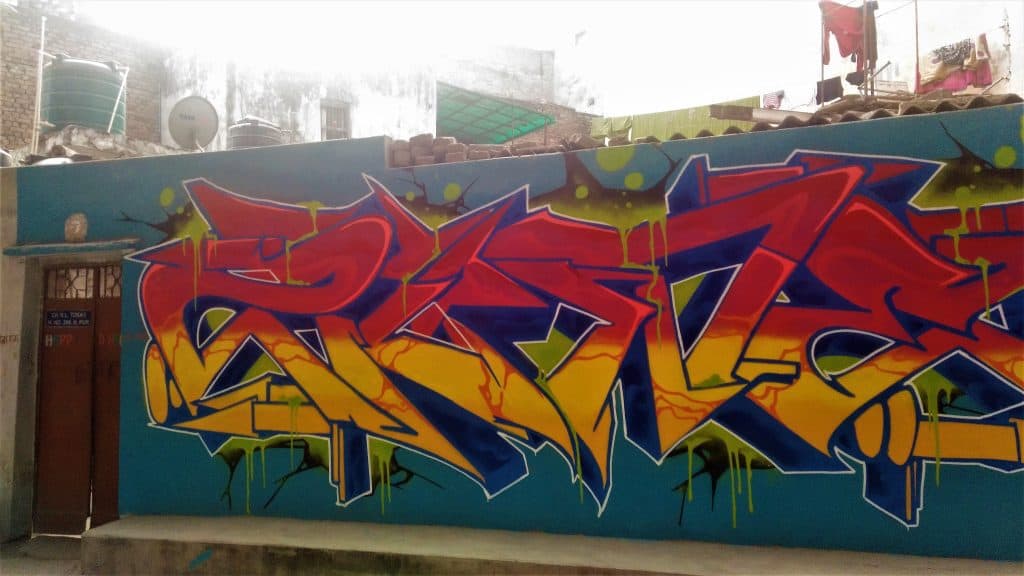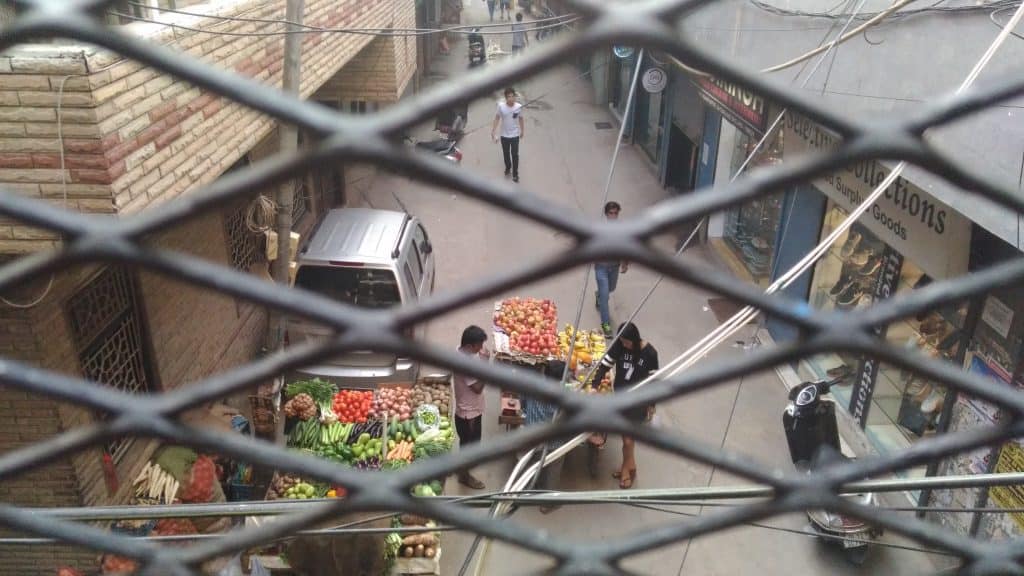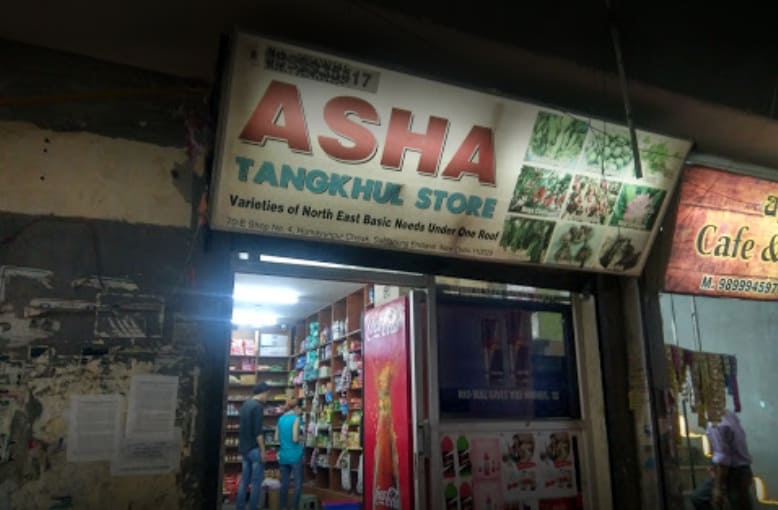The balcony in Cultured, a cafe in Humayunpur, Delhi, gives a good vantage point of the daily happenings in the streets — women walking the streets in their chic winter coats, men in trendy hairstyles going to office in their formal attire and people coming out to buy their daily groceries. On the same street one can see the local men of the village sitting in front of their houses with a hookah and a bonfire. Most of the young tenants in this urban village in Delhi are from the North Eastern states.
As I sat in the cafe with Agnes, an Arunachali student who has been staying in Humayunpur for more than five years now, she tells me about the first time she discovered the place. “It was way back in 2011, I had come to Delhi for the first time for my admissions and came here to meet some school friends who were already staying here. Back then, I didn’t know there were places like this in Delhi where you could only see familiar faces.”. This ‘sense of familiarity’ was a common refrain among many young migrants I spoke to in Humayunpur.
Humayunpur is in a prime location in South Delhi; the Safdarjung Hospital, the outer ring road, Green Park Metro Station all being at a distance of around 1 km. In the 1960s, the government of India acquired the farmlands of the villagers in Humayunpur and sold it to DLF, which was then redeveloped into the nearby upper-middle class colony of Safdarjung Enclave, and Humayunpur survived as a tiny hamlet away from the eyes of the main roads. Ashish Phogat, a local Jat said, “What happened to Humayunpur is what happens to old parents and grandparents, kids grow up and forget their old parents”.
Bhan (2014) writes, “In order to be able to retain their character, urban villages were exempt from any building norms, mixed-use or single use zoning classifications.” The villagers added floors to their houses and started renting out the buildings initially to migrants coming from UP, Bihar and Nepal. In the early 2000s, Northeastern migrants started coming in which coincided with the call-centre boom in the National Capital Region.
“At one time around 400 employees of Convergys were staying in Humayunpur,” said Ashish Phogat. Through word-of-mouth, more people started to shift to the place, especially students studying in the University. Over the years it has come to be characterised as a ‘North-eastern’ neighbourhood, finding an important place in the “North-East Map of Delhi.” (Mcduie-Ra, 2014). What Mcduie-Ra refers to by the North-East Map is a set of practices and places through which migrants from the Northeast circumvent and navigate their way in the city through neighbourhoods, food, faith, and protest.
Finding acceptance
As recently as 2014, the death of Nido Taniam after an altercation with shopkeepeers in Lajpat Nagar shook the Northeastern community in the city. In a city infamous for its racial attacks, how did the North-Eastern community go about making place in an area socially and culturally distinct from their homes?
The North-Easterners are not a homogeneous community and consists of different communities with their own traditions and histories. This ‘virtual’ community which has come up in Humayunpur and in other parts of Delhi has risen out of new networks developed in the city through work, university etc. and a feeling of safety in their combined large numbers against a racial other. They co-exist with the locals while maintaining a careful distance from each other, what one can call a ‘friendly difference’. The Northeastern communities reiterate that Humayunpur is probably the ‘safest’ place for them in Delhi, the locals here are ‘friendlier’ than in other parts of Delhi, and one can roam its streets at any time of the night without any fear.
Ashish Phogat is the husband of Radhika Abrol Phogat, the local corporator and is the de-facto leader of the Jat community. He and his extended family own a considerable number of properties in the village and have good relations with many of the Northeastern migrants. His brother, Virender talked at great length about how the economic exchange has greatly benefited the two communities. Inspite of the money coming in, there still seems to be some form of resentment among some of the villagers. Om Prakash, a member of the Valmiki community laments the change brought about by the migrants in the village, “They started affecting our younger generations starting from their dressing to everything. I once had a tenant from Manipur, he was a nice boy but he used to eat this smelly fish and the stench was horrible”.
Bijoy, an Assamese migrant who owns a jampad/music store in the village tells me initially he and his friends were not even not allowed to cook chicken in their homes. Over a period of time this was relaxed to them being allowed cook chicken once a week and now most of the restaurants in the area serve meat, including pork and buff, and the newer generation also relishes these dishes, albeit secretly.
David, the owner of Mizo Diner, a restaurant serving ethnic Mizo food, has actively engaged with the surroundings of the village. David is a graffiti artist and his paintings can be found in different nooks and corners of the village. He said that these paintings have enabled him to interact more with the local community and he was even invited for dinner at their homes. The villagers are happy that he paints for “free”. While talking about the attitudinal changes of the locals towards the migrants, he said, “Money talks. The locals are profiting from us, why should they have any problems with us?”

David’s graffiti on one of the remaining old village-style houses in Humayunpur. Pic: Arunav Chowdhury
Building lives
After securing their place through this negotiated place-making with the local community, the Northeast migrants have gone about more concrete ways in establishing their foothold in the city. Most of them refer to the village as “Safdarjung”, thereby clubbing Humayunpur with the planned area to draw on its legitimacy to the city at large. The spatialisation of this place-making is manifest physically in the umpteen number of restaurants, cafes, boutiques and Northeast convenience stores found across the village. Migrants looking to secure their lives in the city by finding ways of livelihood that would cement their foothold in Humayunpur have led to a bustling market in the main lane of Humayunpur.
Asha, a Tangkhul woman from Manipur started selling smoked pork and pork cooked in a rice cooker from her home. Word spread and her customers grew, who then started demanding other herbs and ingredients. Three years later she opened the Asha Tangkhul store with the help of another woman who helped her bring the stuff from Manipur through her travel agency. Today she sells a variety of food items, herbs and vegetables indigenous to her native region — such as bamboo shoot, fermented fish and soyabean, smoked buffalo, king chillies, Nagalasung (spring onion) etc. along with Korean ramen noodles and Myanmarese products which are normally found in Moreh, a border town in the Manipur-Myanmar border.
Asha’s customers come from all over the NCR-region. Her youngest sister is married to Swaraj, a Nepali from Darjeeling. The couple used to live in South-Extension but shifted to Humayunpur when she opened her store. Swaraj opened a boutique to the space left of Urban Ethic. In 2016, they opened a restaurant Asha Kitchen, next to the store. The restaurant has simple interiors with white walls and basic furniture compared to most of the new restaurants and cafes which have opened in Humayunpur. The new cafes like Cultured have invested in interior design like having an open kitchen; modelling it on other ‘hip’ places in the city.
Swaraj and Asha split their time between the three places, and the other two sisters also help out from time-to-time. Asha store is like the ‘centre’ of the market as most of the migrants come to do their weekly shopping here and it also becomes a point of contact to find houses for new migrants coming in from Manipur.
‘Just like home‘
Many such stories are abound in the lanes of Humayunpur. The relationship of the migrant community with this place at times is one of emotional attachment, the most common reply being, “It’s just like home”. However underlying this “home” are also other factors, such as their associations or community networks and proximity to university and workplace. The temporality of settling in is then reflected in the shifting and sprouting of other “Northeastern-neighbourhoods” in Delhi.
Humayunpur is being transformed everyday with newer and more upscale restaurants replacing the former smaller ones. Rents are also rising with many of the older migrants now finding it difficult to continue living here. Some of the people in the village says that it will soon become like Hauz Khas Village, a nearby urban village which glitters with expensive pubs and restaurants.
Many migrants who have spent a considerable time in Humayunpur says that it has become an integral part of their lives. Agnes says, “When we talk about spaces like home, Delhi is my second home, and in Delhi it is Humayunpur. This is one place I can always come back to, even if I don’t have friends, I’ll always be welcome here.”
[This article first appeared in BlogURK: Reimagining Cities in the Global South and has been republished here with minimal edits, except in the headline. The original article and the complete set of references can be found here.]

